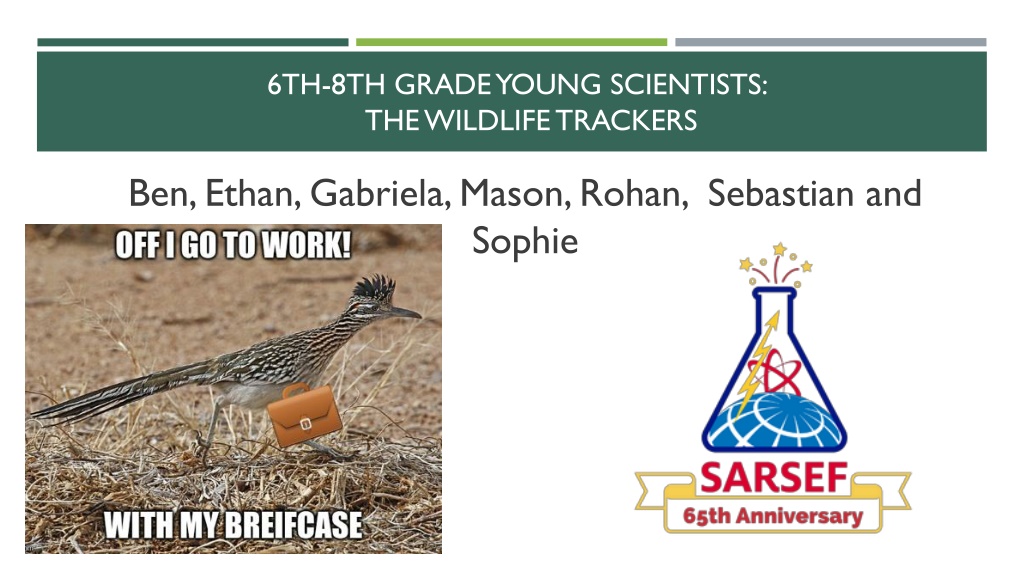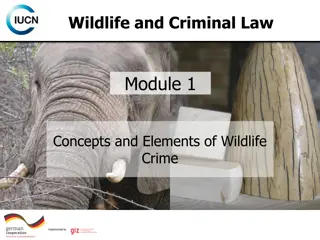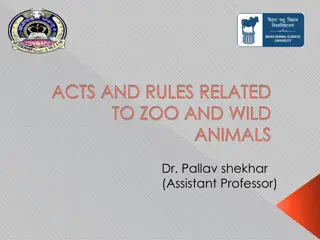Young Scientists Investigate Wildlife Behavior and Habitat Effects
The Wildlife Trackers, a group of young scientists, conducted a study to understand how the presence of people and different habitats affect the behavior and flight responses of animals in their neighborhood. By measuring flight response distances of various animals like birds, lizards, and rabbits, they discovered interesting findings such as birds being the least tolerant of humans and urban lizards having greater flight response distances than rural lizards. This study provides insights into how habitat types influence animal behavior and responses to human presence.
Download Presentation

Please find below an Image/Link to download the presentation.
The content on the website is provided AS IS for your information and personal use only. It may not be sold, licensed, or shared on other websites without obtaining consent from the author. Download presentation by click this link. If you encounter any issues during the download, it is possible that the publisher has removed the file from their server.
E N D
Presentation Transcript
6TH-8TH GRADE YOUNG SCIENTISTS: THE WILDLIFE TRACKERS Ben, Ethan, Gabriela, Mason, Rohan, Sebastian and Sophie
THE WILDLIFE TRACKERS WONDERED: How does the presence of people affect the behavior of animals in my neighborhood? How does habitat affect the flight response of animals? How does habitat (urban vs rural/desert vs suburban) affect the flight response of animals?
FLIGHT RESPONSE DISTANCE Protocol: 1. Locate a focal animal (rabbit, lizard, bird) 2. Stop moving when you find your focal animal. 3. Make a mental note of a physical feature (a rock, a leaf, a stick) near the animal that will help you visually mark its current location. Make your physical feature obvious and easy to remember. 4. Walk purposefully but not rapidly toward the animal. You are not sneaking up on the animal; you are approaching it normally. 5. When the animal flees/flies/runs/moves away, drop the rock to mark your location. 6. Using your physical feature to remember that location of the focal animal. Measure the distance from your location to where the focal animal was with either of the following methods: A. Use a measuring tape to measure the distance from the rock to the location from which the focal animal fled. B. Walk heel-to-toe from the rock to the location where the focal animal ran from. Record the number of heel-to-toe steps. Measure the length of your shoe in cm. to convert footsteps to distance (m)
Zebra Tailed Lizard Whiptail Lizard
PRELIMINARY DATA SUGGESTS THAT: Birds were the least tolerant of humans and had the greatest flight response distance Ground dwelling perches had the greatest flight response distance of all (average= 7.9 meters) Habitat may play a role in the flight response distance Urban birds and mammals had shorter flight response distance than rural birds and mammals Urban lizards had greater average flight response distance than rural lizards

















































